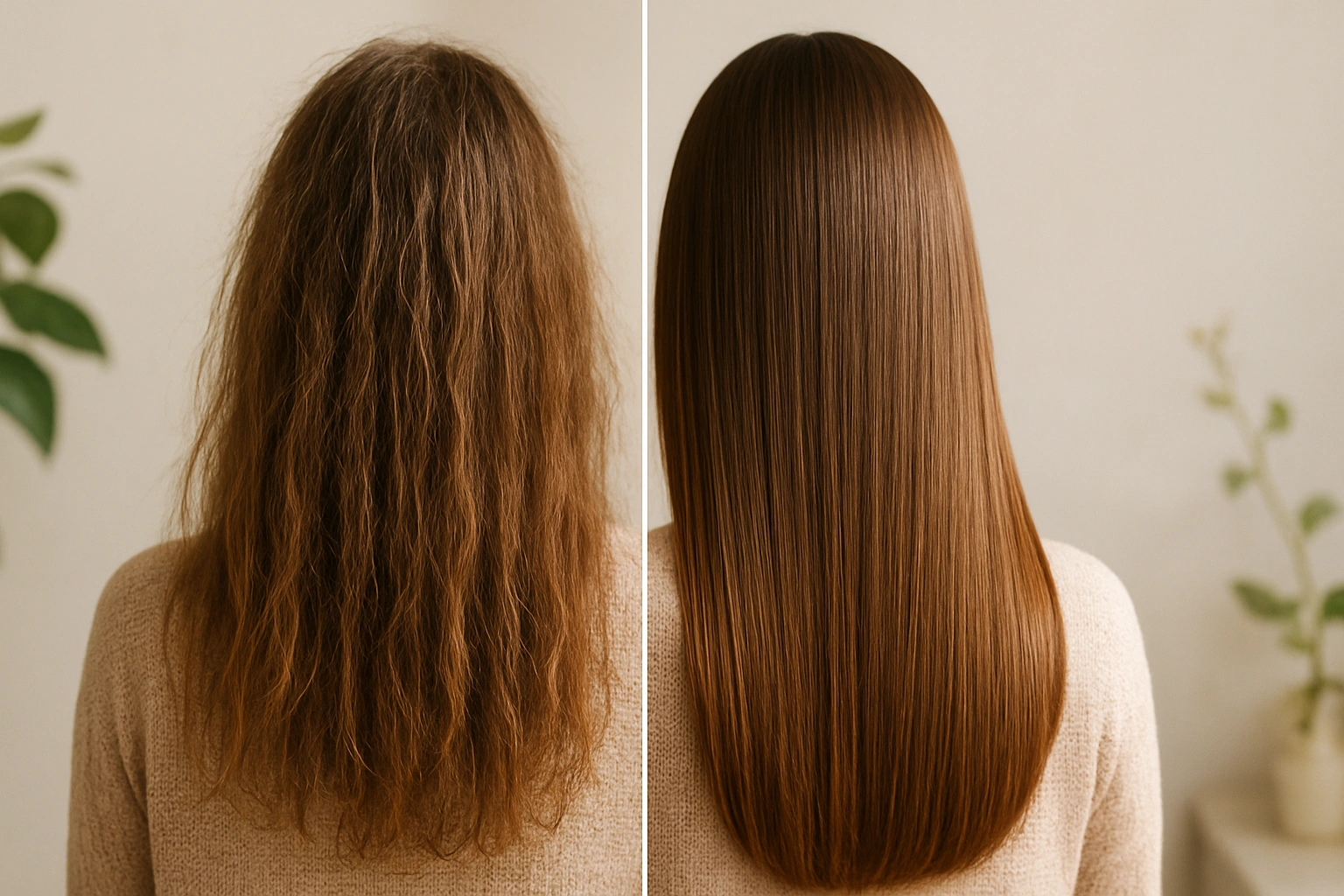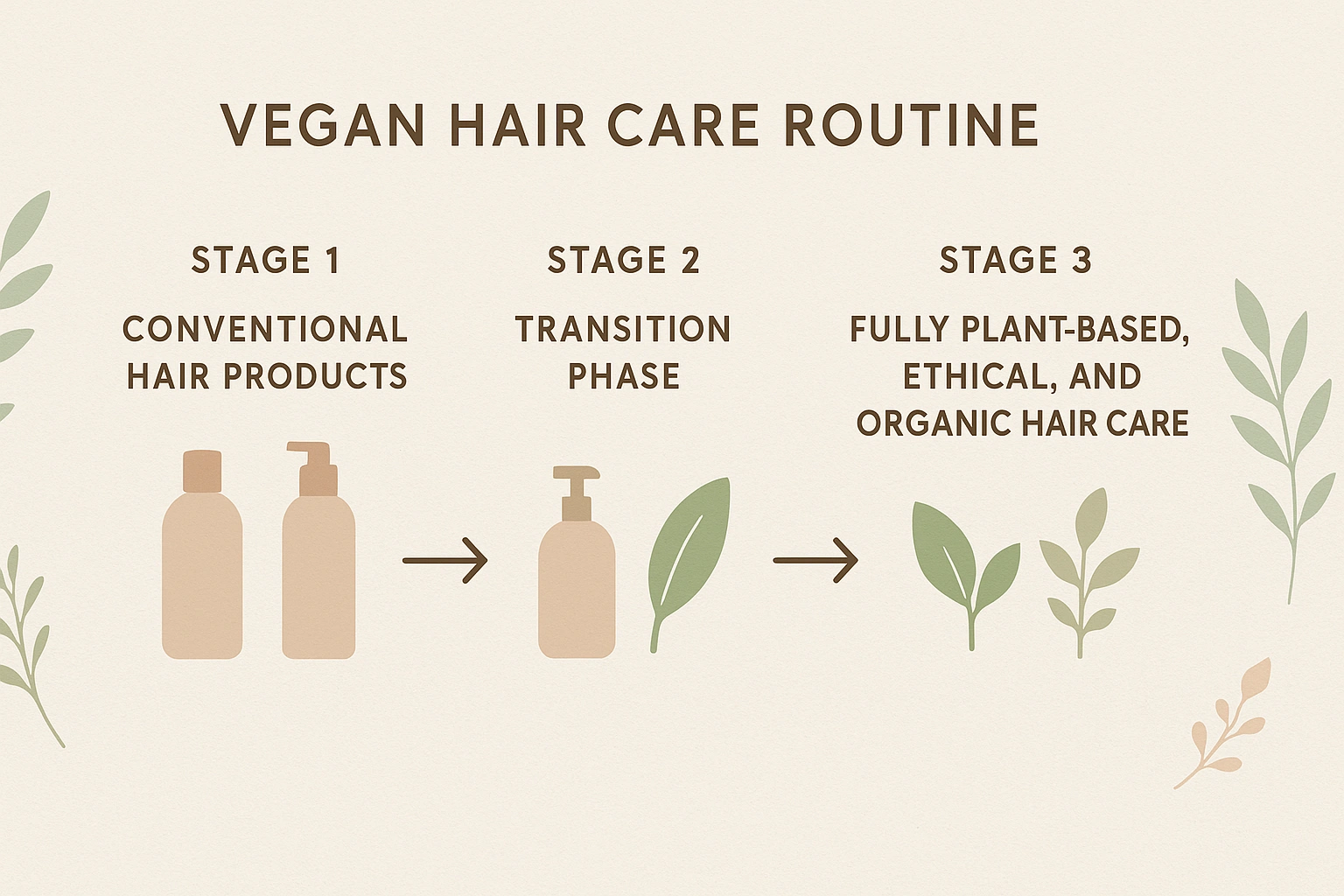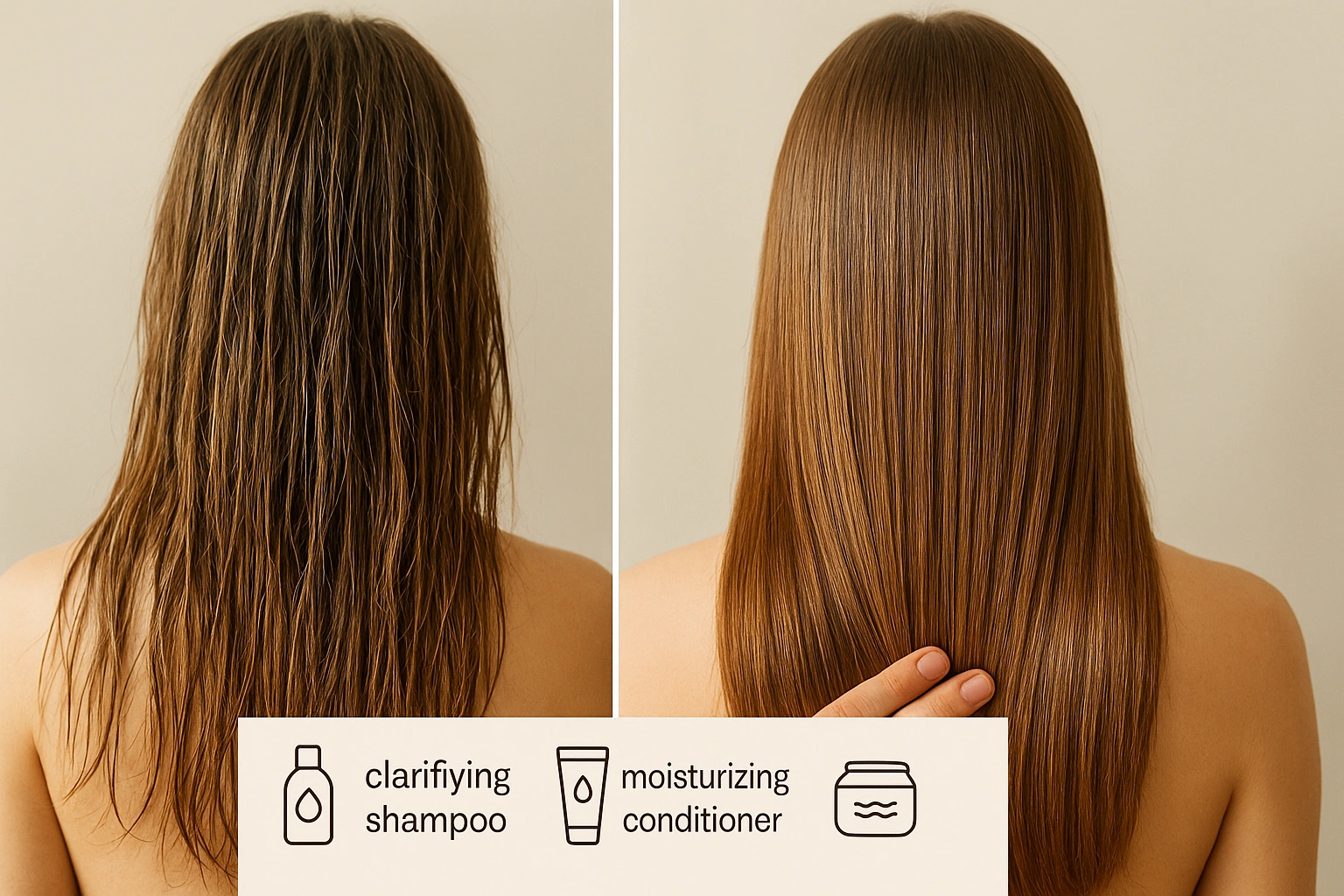So, you’ve decided to break up with harsh chemicals and embrace a cleaner hair care routine. Congratulations! But if you’ve heard whispers of a dreaded “transition phase” that leaves hair feeling greasy, waxy, or just plain weird, you might be hesitant. Fear not. Learning how to switch to organic hair care doesn’t have to be overwhelming.
Making the switch to organic hair care is about patience and understanding, not perfection. This guide is your step-by-step roadmap to navigating the transition smoothly and successfully, helping you replace old habits with healthier routines.
By the end, you’ll see why many people choose to switch to organic hair care for stronger, shinier hair. You’ll also know exactly what to expect, how to manage the detox phase, and feel confident that the decision to switch to organic hair care is one of the best moves for long-term scalp and hair health.
What is the “Hair Detox” Period?
The “hair detox” or transition period is the adjustment phase your hair and scalp go through when you decide to switch to organic hair care. For years, your strands may have been coated in silicones that create artificial shine, while sulfates stripped your scalp and left it unbalanced.
When you switch to organic hair care, these layers of buildup begin to clear away, allowing your hair to breathe and your scalp to reset naturally. It’s a temporary phase, but an important part of the process.
Patience is key when you switch to organic hair care, as your scalp might overproduce oils at first. This adjustment is simply your body finding its natural rhythm again.
Ultimately, the decision to switch to organic hair care is what allows your scalp and hair to fully rebalance, paving the way for long-term strength and healthier growth.
This recalibration is at the heart of building a new **vegan hair care routine**. According to Wired, the clean beauty industry’s growth is fueled by consumers educating themselves on ingredients. Understanding this detox process is the first step to a successful switch, preventing you from giving up before you see the amazing results.

Why is the Transition Worth It?
A Healthier, Balanced Scalp
Conventional shampoos can send your scalp’s oil production into overdrive. Organic formulas cleanse gently, allowing your scalp to return to its natural equilibrium. This can lead to:
- Reduced dandruff and itchiness.
- Less oiliness, meaning you may be able to go longer between washes.
- An optimal environment for healthy hair growth.
Genuinely Stronger, Shinier Hair
Instead of coating your hair with plastic-like silicones, the decision to switch to organic hair care gives your strands access to real nourishment from vitamins, minerals, and fatty acids.
When you switch to organic hair care, the repair process works from within, strengthening the hair shaft instead of masking it with artificial shine.
Over time, as you switch to organic hair care, your hair begins to show true health and vitality, looking stronger and more radiant naturally.
Choosing to switch to organic hair care means you’re investing in lasting results, with shine that comes from genuine repair rather than temporary coatings.
How to Switch: A 4-Week Step-by-Step Guide
Patience is your best friend. Follow this timeline to make the transition as smooth as possible.

Weeks 1-2: The Clarifying Phase
The Goal: Remove years of silicone and product buildup.
- What to Use: Start with a clarifying organic shampoo. Look for ingredients like apple cider vinegar, lemon, or tea tree oil.
- What to Expect: Your hair might feel dry, frizzy, or even a bit sticky as the buildup is stripped away. This is the toughest part, but it’s temporary!
- Pro Tip: Use a deep conditioning vegan hair mask at the end of week 2 to replenish moisture.
Weeks 3-4: The Nourishing Phase
The Goal: Rebalance the scalp and infuse hair with nutrients.
- What to Use: Switch to a moisturizing organic shampoo and conditioner. Look for ingredients like shea butter, argan oil, or aloe vera.
- What to Expect: Your scalp’s oil production will start to normalize. Your hair will begin to feel softer and more manageable. You’re turning a corner!
Choosing Your Transition Toolkit
You don’t need a dozen products to make the switch to organic hair care feel effective. Start with just three essentials that support your journey.
When you switch to organic hair care, the right basics are often more powerful than an overloaded routine.
Having these key items helps you switch to organic hair care smoothly, without the stress of trying too many things at once.
With a little consistency, you’ll see how easy it is to switch to organic hair care and enjoy real results.
1. The Clarifying Shampoo
This is your non-negotiable first step. It does the heavy lifting of removing buildup. You’ll use this for the first 1-2 weeks, and then once every couple of weeks for maintenance. A great option is the **Acure Curiously Clarifying Shampoo**. Its lemongrass and argan oil formula is effective at cutting through residue without being overly harsh, making it a perfect starting point for your detox.
| Pros | Cons |
|---|---|
| Deeply cleanses scalp and hair | Can be drying if used too often |
| Speeds up the detox process | Not ideal for daily use |
2. The Moisturizing Shampoo & Conditioner
This will be your daily or regular driver after the initial clarifying phase. It gently cleanses while providing essential hydration. The **Avalon Organics Nourishing Lavender Shampoo & Conditioner** duo is a fantastic choice. It’s gentle, packed with aloe and vitamins, and helps to soothe the scalp as it rebalances, leaving hair soft and manageable.
3. The Weekly Deep Conditioning Mask
During the transition, your hair will be thirsty for moisture as it sheds its silicone coating. A weekly mask is crucial for replenishing hydration and strengthening strands. The **Briogeo Don’t Despair, Repair! Deep Conditioning Mask** is a powerhouse of rosehip oil and algae extract that provides intense moisture and is clinically proven to reduce breakage, making it an ideal companion for your journey.
Common Mistakes to Avoid
- Giving Up Too Soon: The first two weeks can be challenging. Trust the process and don’t revert to your old shampoo!
- Not Rinsing Thoroughly: Organic formulas don’t have the same slip as silicone-based ones. Take an extra minute to rinse to prevent any residue.
- Using Too Much Product: A little goes a long way. If you’re not getting a big lather, add more water, not more shampoo.
- Forgetting to Clarify: Skipping the initial clarifying step will prolong the transition indefinitely. You have to remove the old before the new can work.
Expert Tips for a Smooth Transition
“The biggest change is learning to focus on your scalp. That’s where hair health begins. Massage your organic shampoo into the scalp for a full minute to stimulate blood flow and gently dislodge impurities. The ends will get clean enough as you rinse.”
– Bridgette Hill, Certified Trichologist
Frequently Asked Questions (FAQ)
Q: How long does the hair detox period last?
A: The transition period, or ‘hair detox,’ typically lasts between 2 to 6 weeks. This can vary depending on your hair type, how much silicone buildup you have from previous products, and how consistently you follow your new organic routine. Patience is key during this phase.
Q: Why does my hair feel greasy or waxy during the switch?
A: This is a very common experience. Your scalp may be overproducing oil to compensate for years of being stripped by harsh sulfates. As the organic shampoo removes silicone buildup, this waxy residue can become more apparent. A good clarifying organic shampoo and thorough rinsing will help manage this.
Q: Can I use my old products while I transition?
A: It’s best to go ‘cold turkey’ and commit fully to your new organic routine. Using conventional products, even occasionally, will re-deposit silicones and sulfates onto your hair, effectively resetting the detox process and prolonging the awkward transition phase.
Conclusion
Making the **switch to organic hair care** is a journey, not an overnight miracle. By understanding the detox process and arming yourself with patience and the right products, you can navigate the transition with confidence. The reward is hair that is not just superficially shiny, but genuinely healthy, strong, and balanced from the inside out. Embrace your new **vegan hair care routine** and get ready to meet your best hair yet. For more on ingredient safety, you can always check the Google’s safety resources.
